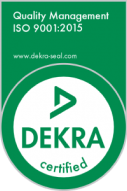Enterprise Resource Planning (ERP) systems have revolutionized how organizations manage resources, streamline processes, and make data-driven decisions. They deliver various benefits, from enhanced efficiency and visibility to standardized processes, increased customer satisfaction, and reduced costs. According to a report by Panorama Consulting Solutions, large organizations have embraced ERP systems, with 81% of organizations with annual revenues over $1 billion and 68% of organizations with annual revenues between $500 million and $1 billion implementing them. The adoption rate for organizations with annual revenues between $50 million and $500 million is steadily increasing, currently at 26%.
Despite the numerous advantages of ERP systems, the critical aspect of post-implementation maintenance is often overlooked. Failing to maintain and update the system can lead to it becoming outdated, unstable, vulnerable to security threats, and ultimately requiring significant investments in time, money, and expensive labor to replace. As such, it is essential to establish a comprehensive maintenance plan and system maintenance life cycle to ensure the system remains stable and secure and performs optimally.
A well-designed maintenance plan specifies the schedule and procedures for regular maintenance activities, such as updates, backups, and security checks. It should be reviewed and updated regularly to account for system requirements or business needs changes. Key components of the maintenance plan include regular system updates, data backups, security checks, performance monitoring, and user training. In addition to the maintenance plan, organizations should establish appropriate environments and a system maintenance life cycle to support their maintenance activities.
The system maintenance life cycle typically comprises four stages: planning, analysis, implementation, and evaluation. During the planning stage, the maintenance plan is created, including the schedule for regular maintenance activities and the resources required to carry them out. The analysis stage involves examining the system to identify potential issues or conflicts that may arise during the maintenance process. In the implementation stage, maintenance activities are performed, and changes are thoroughly tested in a non-production environment before being deployed to the production environment. Finally, in the evaluation stage, the effectiveness of the maintenance activities is assessed, and any necessary adjustments are made to the maintenance plan.
System maintenance can be divided into patch maintenance, upgrades, and enhancements. ERP vendors typically provide patches and upgrades to keep their systems current and secure. Patches are relatively easy to install and address specific bugs in processes or legal changes mandated by legislation. On the other hand, upgrades usually consist of monthly or quarterly maintenance/minor upgrades and a major upgrade every three years. Major upgrades can take several months to install but are essential for keeping systems up-to-date and running smoothly. Enhancements involve adding new features or functionality to the system, ranging from simple to complex.
A robust ERP maintenance strategy experiences fewer issues, better system performance, and lower total cost of ownership (TCO) over time (Source: Deloitte, “Optimizing ERP Maintenance and Support”). This highlights the importance of investing in a comprehensive maintenance plan and adhering to a well-defined system maintenance life cycle.
When implementing an ERP system, organizations should also consider the potential risks and challenges associated with system maintenance. These may include data migration issues, integration complexities, and employee resistance due to changes in work processes. To mitigate these risks, organizations can follow best practices such as involving key stakeholders in planning, establishing clear communication channels, and providing adequate user training and support.
Successful implementation of an ERP system does not end with its deployment. Organizations must recognize the importance of ongoing maintenance to ensure the system remains stable, secure, and effective in delivering the desired benefits. By establishing a comprehensive maintenance plan and system maintenance life cycle, organizations can optimize the performance of their ERP systems, reduce costs, and improve overall efficiency.
Another critical aspect of ERP maintenance is monitoring and measuring the system’s performance. Key Performance Indicators (KPIs) can help organizations track their maintenance efforts’ effectiveness and identify improvement areas. By regularly analyzing these KPIs, organizations can make informed decisions about resource allocation, prioritize maintenance activities, and ensure their ERP system continues to deliver value.
Organizations should also consider leveraging advanced technologies, such as Artificial Intelligence (AI) and Machine Learning (ML), to enhance their ERP maintenance efforts. These technologies can help automate routine maintenance tasks, predict potential issues before they escalate, and optimize system performance. By embracing these innovative solutions, organizations can stay ahead of the curve and ensure their ERP systems remain reliable, secure, and efficient.
In addition to these strategies, organizations should foster a continuous improvement culture and encourage employees to participate actively in the maintenance process. By involving end-users in identifying system issues, organizations can ensure that their maintenance efforts address real-world problems and lead to tangible improvements in system performance. This collaborative approach can also help build a sense of employee ownership and commitment, leading to higher user satisfaction and system adoption.
Organizations should remain vigilant about the ever-evolving cybersecurity landscape and protect their ERP systems against emerging threats. Regular security audits, vulnerability assessments, and penetration testing can help identify potential weaknesses in the system and provide valuable insights for strengthening its defenses. By prioritizing security in their maintenance efforts, organizations can safeguard their critical data and business operations from the risks posed by cybercriminals.
The ongoing maintenance of an ERP system is crucial to its ability to deliver value to the organization. By developing a comprehensive maintenance plan, adhering to a well-defined system maintenance life cycle, and leveraging best practices and advanced technologies, organizations can optimize the performance of their ERP systems and drive continuous improvement across their business operations.
About Columbia Advisory Group:
Columbia Advisory Group (CAG) is a leading Information Technology (IT) consulting firm. CAG’s team has assessed and helped improve the performance of more than 300 technology organizations and IT departments, including many higher education institutions, state agencies, and Fortune 50 customers. Practice specialty areas include Infrastructure, IT Service Management, Cybersecurity, and A/V Services. CAG improves business outcomes with IT insights and expert technical support. Based in Dallas, Texas, CAG works extensively with clients throughout the U.S. Contact us at info@columbiaadvisory.com.
References:
- Panorama Consulting Solutions. (2018). “2018 ERP Report” [PDF file]. Retrieved from https://www.panorama-consulting.com/resource-center/erp-report-archive/2018-erp-report/ This report provides statistics on ERP system adoption rates and trends across different industries and organization sizes.
- Deloitte. (n.d.). “Optimizing ERP Maintenance and Support.” Retrieved from https://www2.deloitte.com/content/dam/Deloitte/xe/Documents/technology/erp/ME_PoV_Optimizing_ERP_maintenance_and_support.pdf This document from Deloitte provides insights and best practices for optimizing ERP maintenance and support to improve system performance and reduce total cost of ownership.
- Brehm, H., Heinzl, A., & Markus, M. L. (2001). Tailoring ERP systems: a spectrum of choices and their implications. Proceedings of the 34th Annual Hawaii International Conference on System Sciences. doi: 10.1109/HICSS.2001.927045 This research paper discusses the challenges and risks associated with ERP system maintenance and provides recommendations for tailoring ERP systems to meet specific organizational needs.
- Ahmad, M., & Cuenca, R. P. (2013). Critical success factors for ERP implementation in SMEs. Robotics and Computer-Integrated Manufacturing, 29(3), 104-111. doi: 10.1016/j.rcim.2012.04.019 This research paper discusses critical success factors for ERP implementation in small and medium-sized enterprises, including the importance of ongoing maintenance and user training.
- Gartner. (2020). “Magic Quadrant for ERP Systems.” Retrieved from https://www.gartner.com/en/documents/3989363/magic-quadrant-for-cloud-erp-for-product-centric-enterpr This report by Gartner provides an overview of the ERP market, including trends, vendor analysis, and recommendations for ERP system selection, implementation, and maintenance.
Ming Luong
Delivery Director


